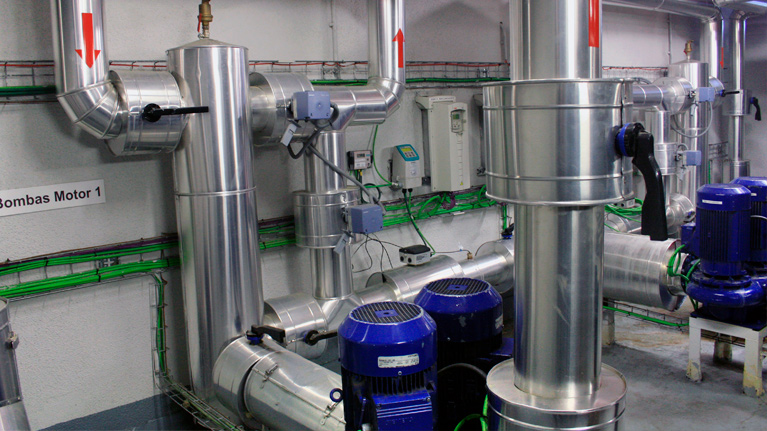Smart cooling networks to enhance energy efficiency
Tekniker is leading the European INDIGO project whose aim is to develop a new generation of smarter, more efficient and competitive cooling distribution systems. In addition to coordinating the project, the technology centre is also collaborating with Giroa – Veolia to support the implementation of all developments at the Basurto University Hospital testing facilities.

Efficient district cooling systems do not produce cooling inside buildings as occurs with on-site equipment but rather at centralised facilities that climatise buildings remotely. In addition to renewables, these facilities use other energy sources to deliver cooling through a system that improves the quality and efficiency of supply and reduces energy consumption and CO2 emissions.
Although these systems are relatively new in our context, reports show there is a 70 km long urban cooling system in Paris that has been operating for several years connected to 500 buildings, with the Louvre museum being one of them. Stockholm, Belgrade, Copenhagen, and Barcelona are other European cities that operate district cooling systems.
In order to extend the use of these facilities throughout the continent, Tekniker, a member of the Basque Research and Technology Alliance (BRTA), has led the European INDIGO project whose objective consists developing a new generation of district cooling systems that are smarter, more efficient and competitive. Consequently, a number of tools have been developed to improve system planning, control and management to maximise efficiency and minimise associated costs by implementing strategies focused on forecasting cooling demand and energy prices and on developing predictive controllers and programming embedded self-learning algorithms.
Tools used to enhance the competitiveness of district cooling systems
One of the aims of this project is to make district cooling systems widely available throughout Europe so they can become more competitive. To achieve this goal, two open-source software tools have been developed: the first tool allows for cooling system planning and design optimisation, whereas the second tool provides a library of models so that designers can obtain information related to how components behave in these systems.
More specifically, Tekniker, thanks to a high degree of specialisation regarding thermal engineering in the field of cooling applications, has contributed with its expertise in cooling networks design as well as system modelling and identification and optimal operation techniques.
In addition to coordinating the project, the technology centre has also led the district cooling’s operational strategy and developed optimisers for generation, distribution, and pumping facilities. The organisation, moreover, has provided an open library of simulation models and has also supported the implementation of these developments in the cooling and heating systems currently in operation at the Basurto University Hospital (Bilbao).
In this regard, and in spite of the many difficulties arising from the COVID-19 pandemic in Basurto, all virtual trials carried out by Tekniker have been successful and goals have been achieved with regard to energy savings and air conditioning requirements of all the buildings connected to the hospital’s cooling system have always been met. Potential savings produced by these developments have also been confirmed from an experimental perspective.
This new district cooling system management strategy offers predictive management capabilities and has made it possible to address a number of challenges such as how to integrate different energy sources and achieve an optimum coordination of energy generation, storage and demand. New district cooling systems, therefore, will generate positive repercussions for the business fabric and citizens thanks to significant energy savings and to the use of renewable and residual heat sources that can be achieved by the different developments.
This strategy, moreover, will indirectly further the use of district cooling systems that offer end users multiple advantages such as, among other things, security of supply, less electricity consumption at critical moments to stabilise the electrical grid, lower maintenance costs resulting from centralised production, savings in terms of space, less noise at homes, etc.
The European INDIGO project has been underway for four and a half years with the participation of GIROA-VEOLIA, VTT, CSEM, NUIG and R2M.
